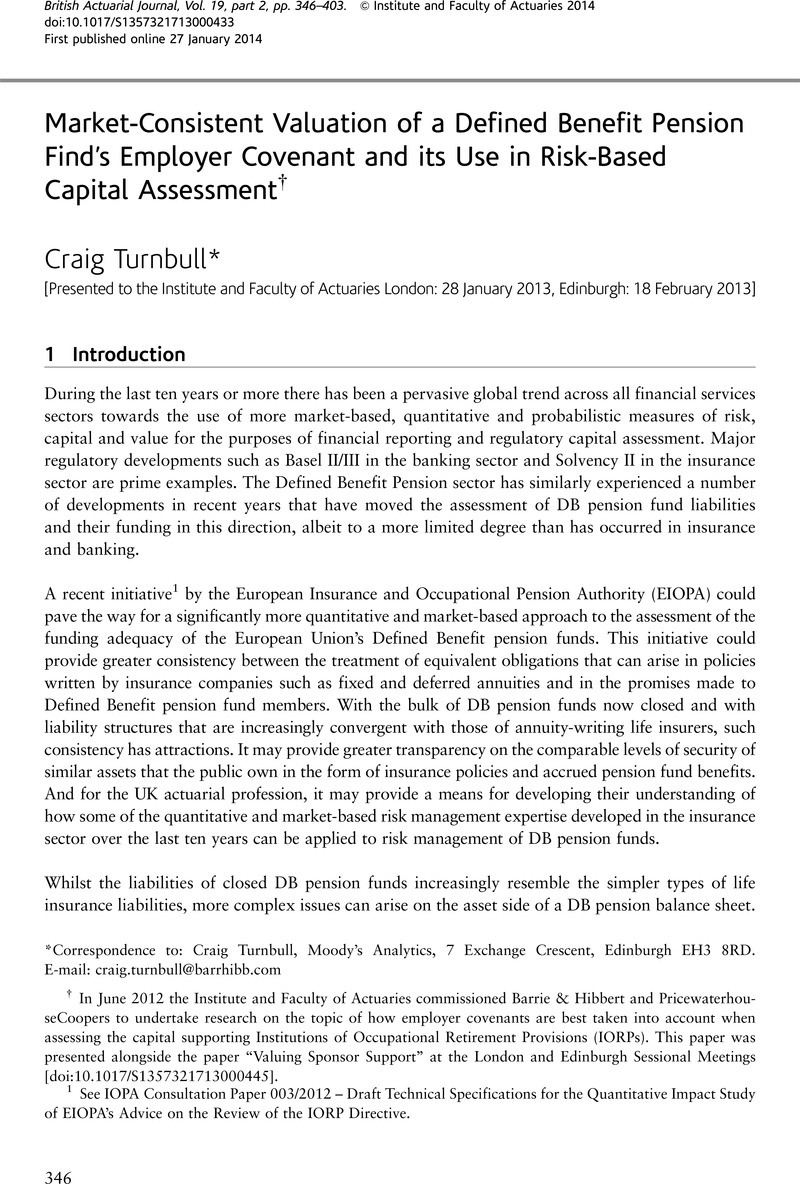Crossref Citations
This article has been cited by the following publications. This list is generated based on data provided by Crossref.
Turnbull, C.J.
2014.
Options for Assessing Employer Covenant and Holistic Balance Sheet ‐ Abstract of the Edinburgh Discussion.
British Actuarial Journal,
Vol. 19,
Issue. 2,
p.
458.
Turnbull, C.J.
and
Sutton, Adam
2014.
Options for Assessing Employer Covenant and Holistic Balance Sheet ‐ Abstract of the London Discussion.
British Actuarial Journal,
Vol. 19,
Issue. 2,
p.
430.
Andrews, Douglas
Bonnar, Stephen
Curtis, Lori J.
Oberoi, Jaideep S.
Pittea, Aniketh
and
Tapadar, Pradip
2022.
Impact of the choice of risk assessment time horizons on defined benefit pension schemes.
Annals of Actuarial Science,
Vol. 16,
Issue. 2,
p.
214.
O’Brien, Christopher D.
2024.
The exercise of discretion on commutation factors in defined benefit schemes: time for change?.
British Actuarial Journal,
Vol. 29,
Issue. ,



